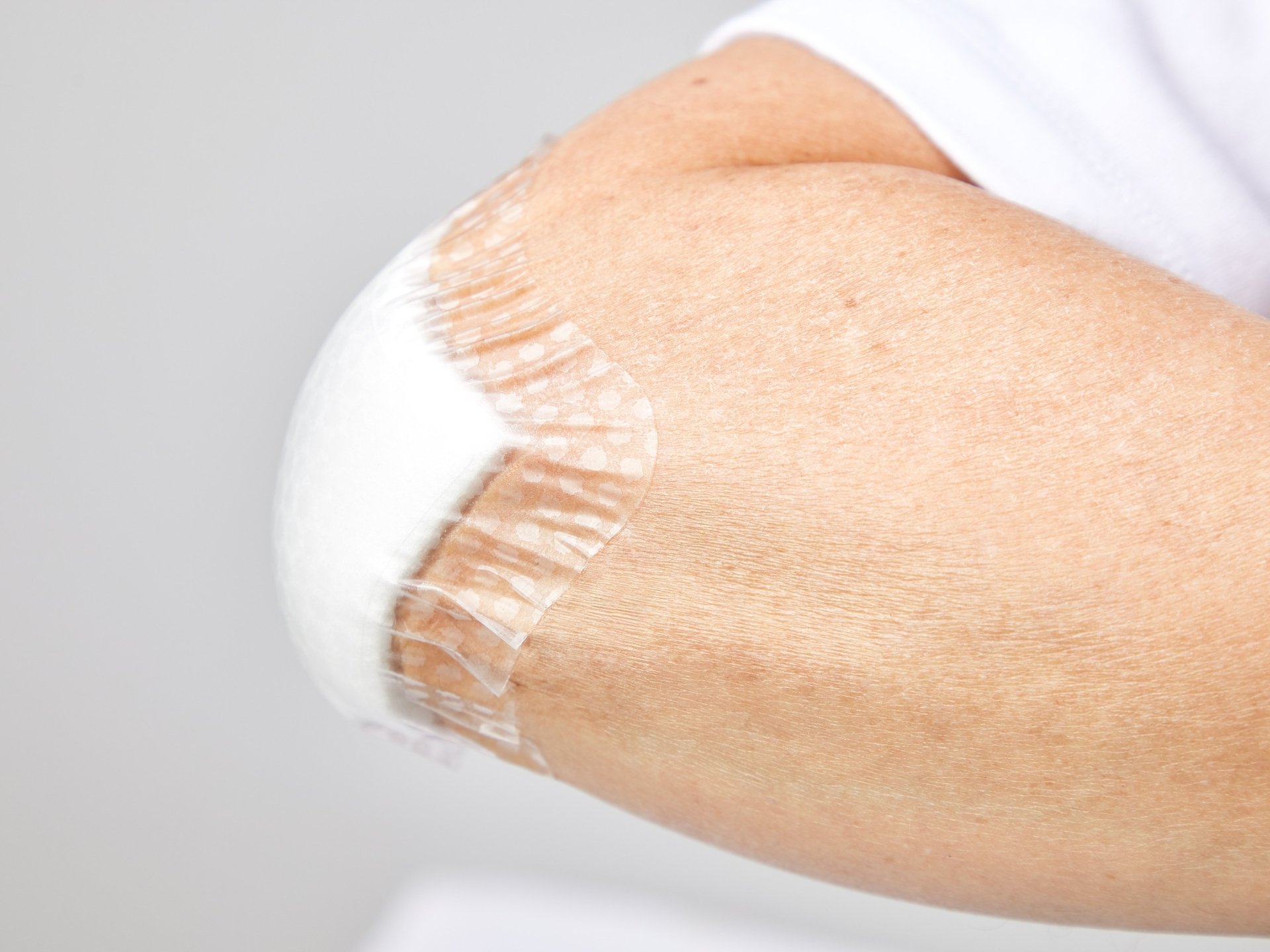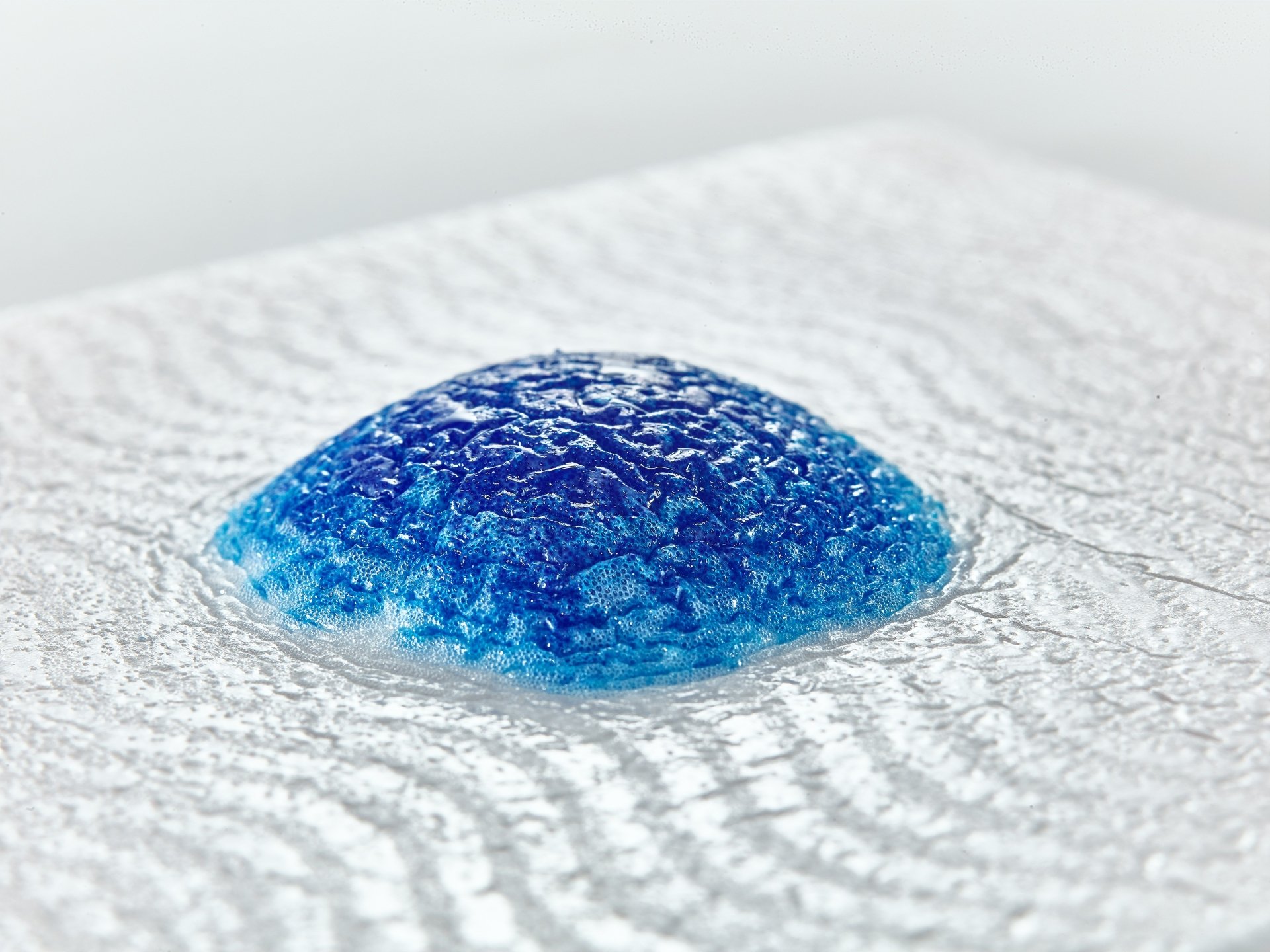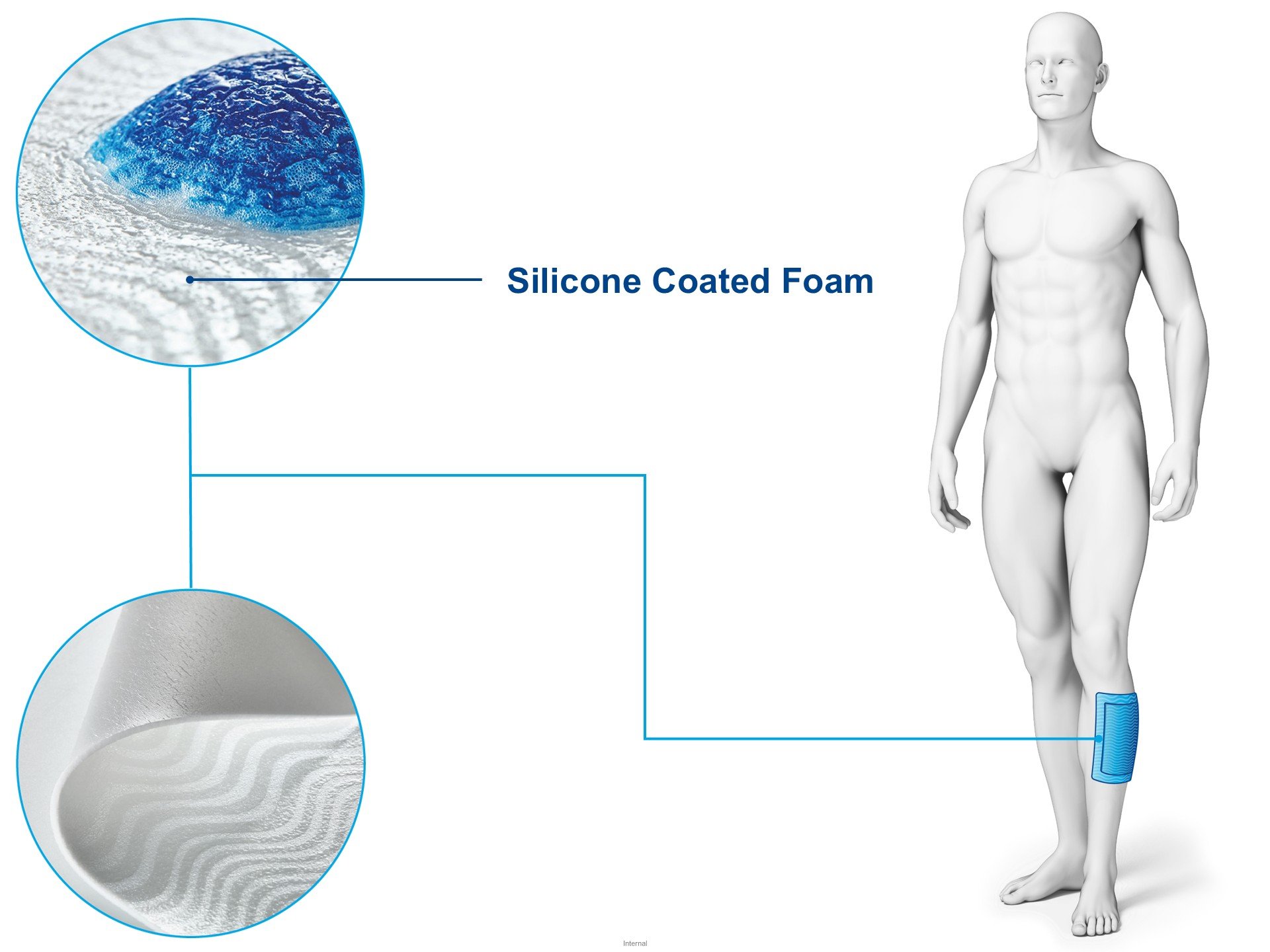Silicone foam dressings
The next dimension in woundcare
Unique, patented silicone foam dressings for excellent exudate management and atraumatic removal
Silicone foam dressings are used on shallow, lightly to moderately exuding wounds. Freudenberg Performance Materials has successfully developed a versatile foam dressing that sets it apart from competitor products. The exceptional combination of exquisite dressing contouring, gelling-fibre-like properties, and the two-type silicone adhesive technology puts this product in a class of its own.

Key Features
- Outstanding fluid management for optimal wound care
- Perfect wound bed contouring, to prevent complications
- Atraumatic dressing removal, enhancing patient’s comfort
- Excellent flexibility for more mobility
- Long-lasting adhesive border for secure, bordered design throughout the wear time
Key Benefits
- A unique product design that offers added value for patients, medical staff and manufacturers alike
- Simplified supply chain to streamline workflows and reduce overall costs
- Patent protected technology ensuring exclusivity and long-term value
Unique combination of anti-adherency and wound bed contouring
Wound dressings have evolved significantly in recent years. They no longer serve to only protect wounds from the external environment. Clinically, key requirements now also include maintaining a moist wound environment, easy handling, close contact with the wound bed, and painless application and removal.
The role of polyurethane foam dressings
Polyurethane foam dressings are well known in advanced wound care. They are valued for being absorbent, soft, and flexible. Silicone foam dressings are commonly used for shallow wounds with low or moderate exudate. They help create a moist environment, offer thermal insulation, and protect the skin – especially when applied over bony areas.
Key benefit: conforming to the wound bed
Good contact between the dressing and the wound bed – also known as intimate contouring – is often associated with gelling fiber technology, such as Hydrofiber®. This helps fill in “dead space’, i.e. empty gaps between the wound and the dressing that may result from tissue or bone removal. Exudate that collects in these spaces can increase the risk of infection or biofilm development.
Foam dressings typically do not offer this level of conformity. However, Freudenberg Performance Materials has developed a foam dressing technology that aims to achieve similar effects. This patented non-laminar silicone application technique uses a patterned coating instead of a uniform silicone layer, thus allowing the dressing to adapt more closely to the wound bed, unlike conventional flat silicone coatings, which can reduce conformability.


Key benefit: atraumatic removal
Silicone adhesives are appreciated for being gentle on the skin and for allowing dressings to be removed without causing trauma. However, stronger silicone formulations are increasingly used to extend wear time. These can sometimes lead to skin stripping or damage to new tissue during removal.
The dual silicone technology of Freudenberg Performance Materials addresses this by using two different types of silicone within one dressing. A stronger silicone is used around the border to adhere to the surrounding skin, while a softer, low-adherence silicone is used on the part of the dressing that touches the wound. This helps ensure secure placement and atraumatic removal.
For Download
- White paper “Clinical perspective”PDF586.04 KB
- The next dimension in silicone dressingsPDF631.92 KB